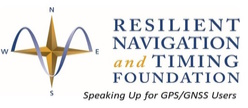In this post we are pointing you to two interesting papers about locating GNSS disruption sources on the ground using satellites.
We like this idea because locating disruption is an important part of the “Protect” in RNT Foundation’s “Protect, Toughen, and Augment GNSS” recommendations.
Of course it is not enough to just locate the disruption. The disruption must also be terminated, the perpetrators appropriately sanctioned, and measures put in place to prevent it from happening again. And even doing all of that is not enough by itself. Protection measures must be coupled with toughened receivers that are more difficult to jam and spoof, and readily available non-space PNT augmentation.
Don’t get us wrong – finding disruptions with satellites is a good idea.
Unfortunately, there are lots of good ideas in the world of GNSS/PNT that should be adopted and broadly implemented.
- Model legislation making disrupting GNSS and other signals punishable as a criminal act is easily available, yet many nations lack the legal framework to effectively sanction intentional disruption.
- Hard-to-jam/spoof receivers are on the market and readily available – yet users tend to purchase based on price even though they place their enterprises at risk to save a few pennies.
- Complementary and backup systems for GNSS have been available for years, yet most nations have turned a blind eye to their utility and cost effectiveness.
Let’s hope that national leaders pick up on some or all of these good ideas, including using satellites to locate interference.
Here are the links to the two papers from Inside GNSS:
Interference Location From Space – Part 1
Interference Location From Space – Part 2

